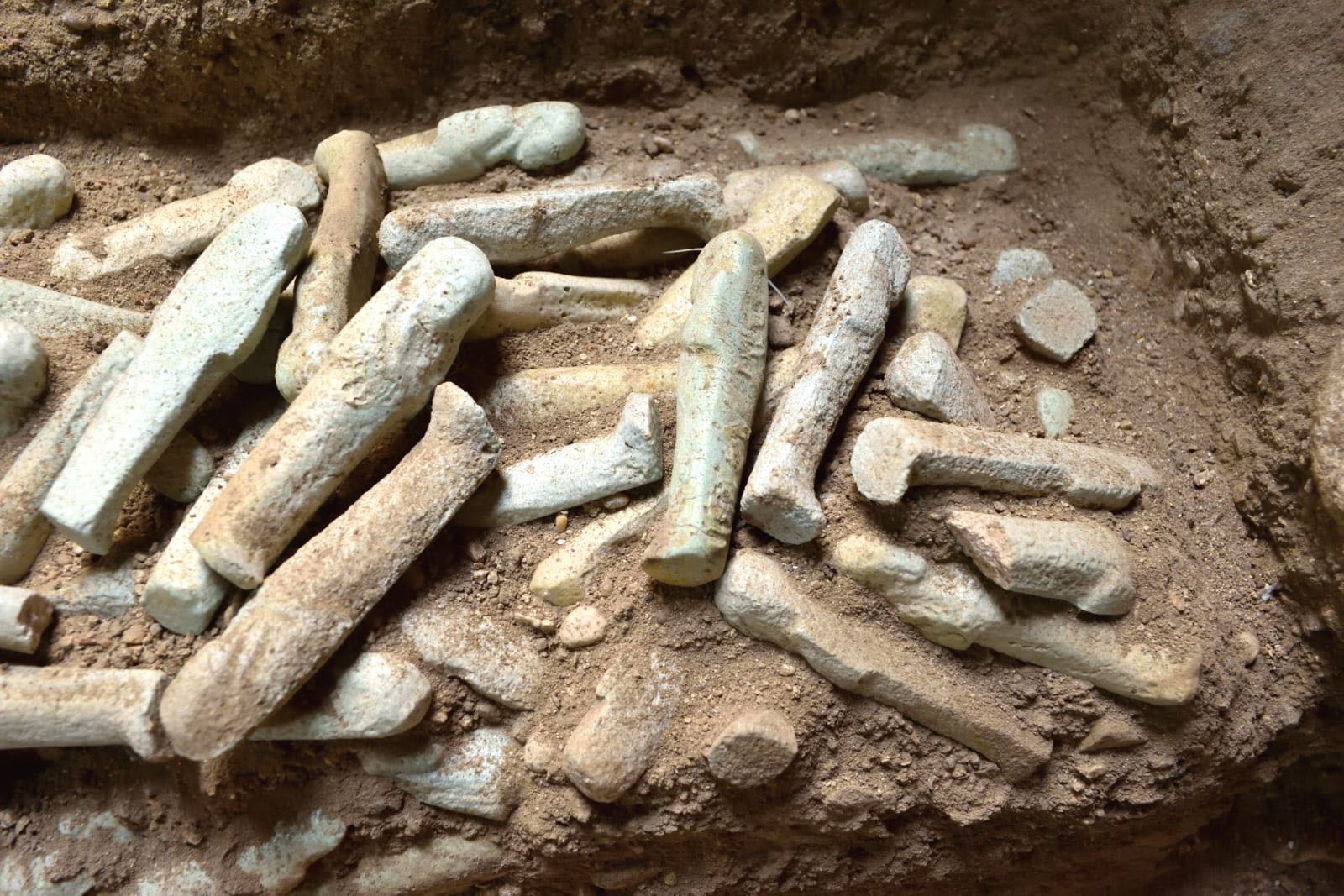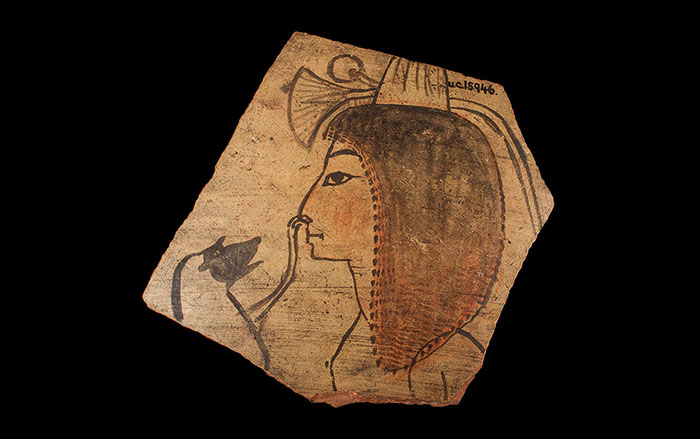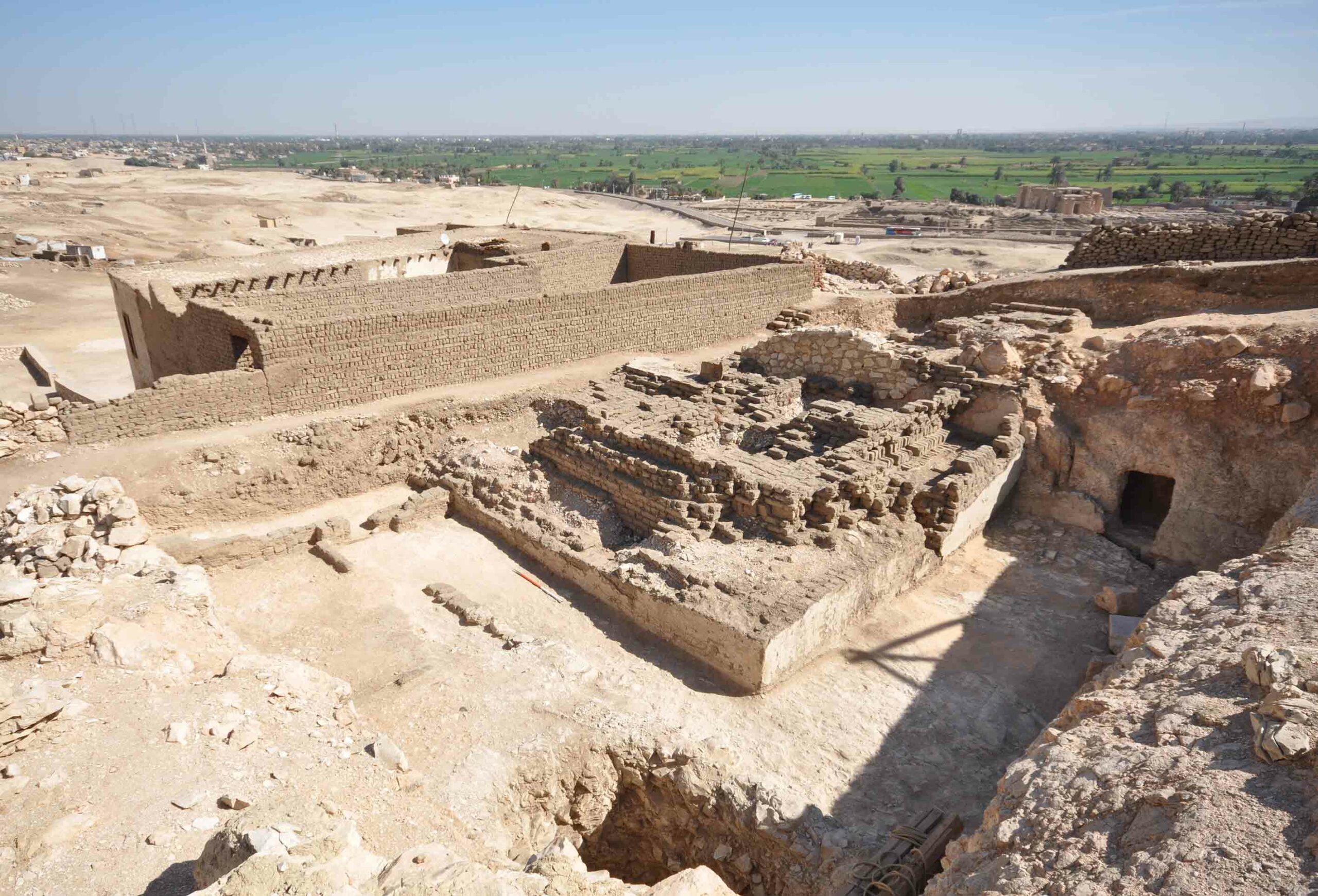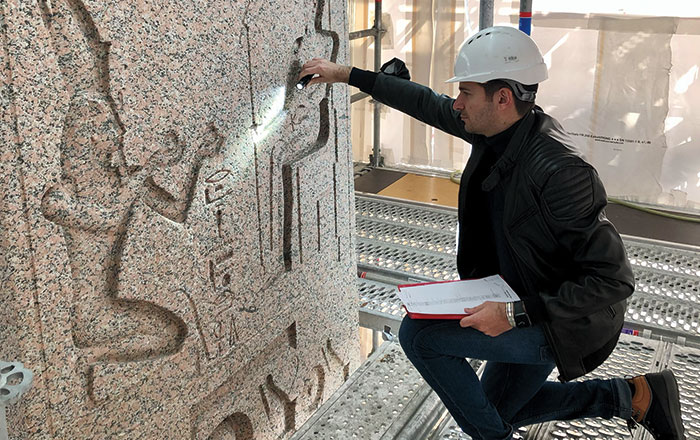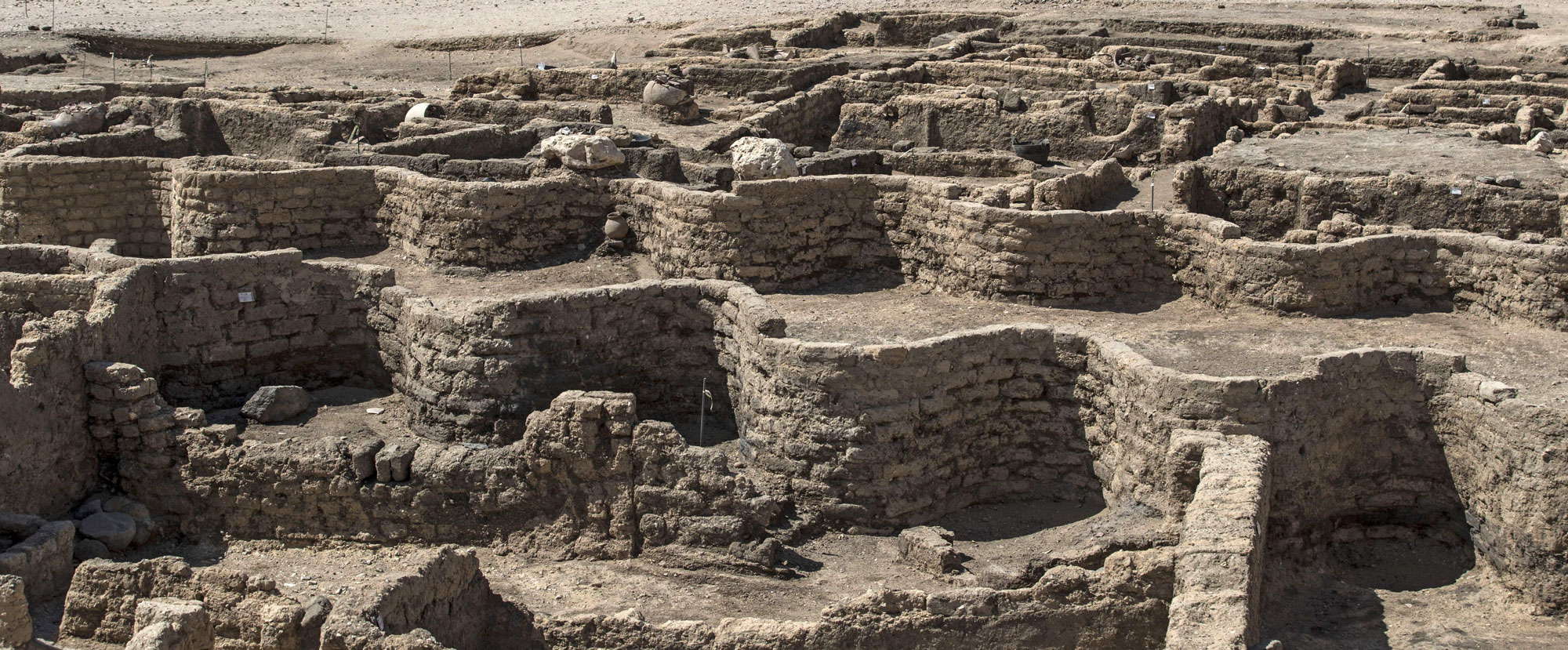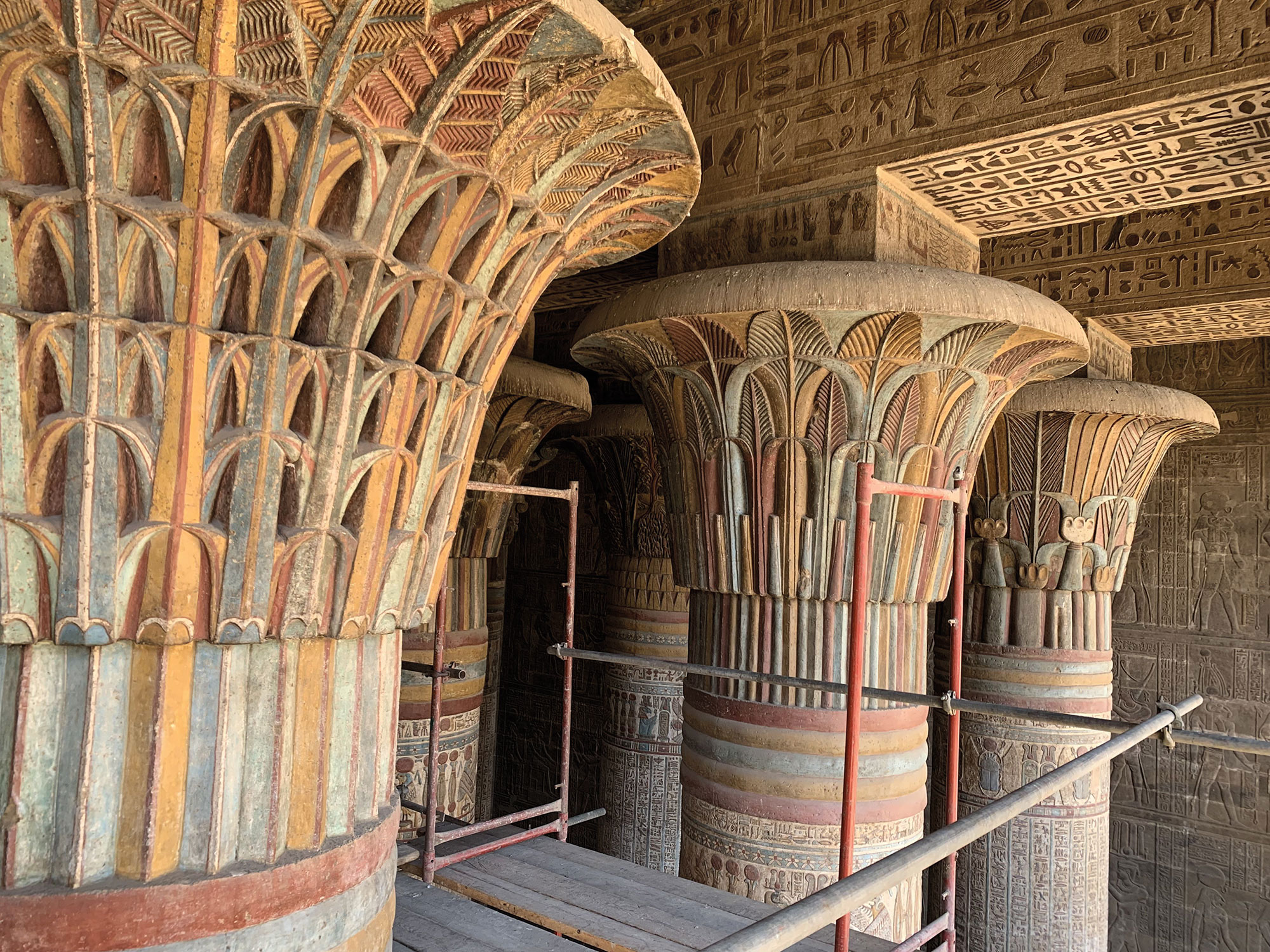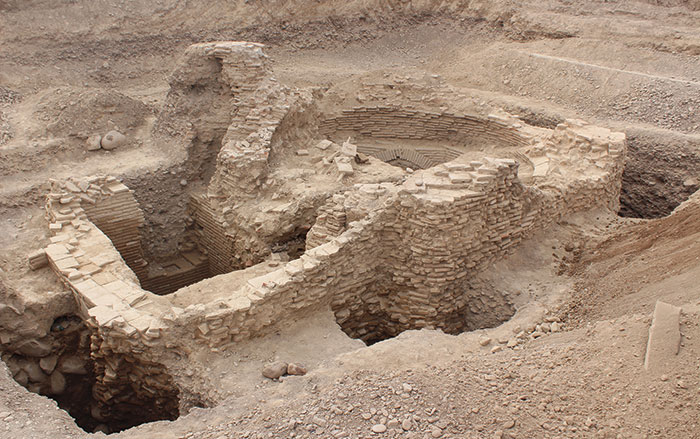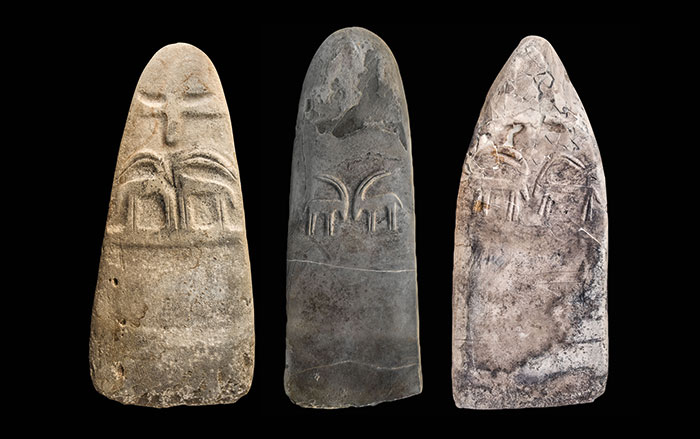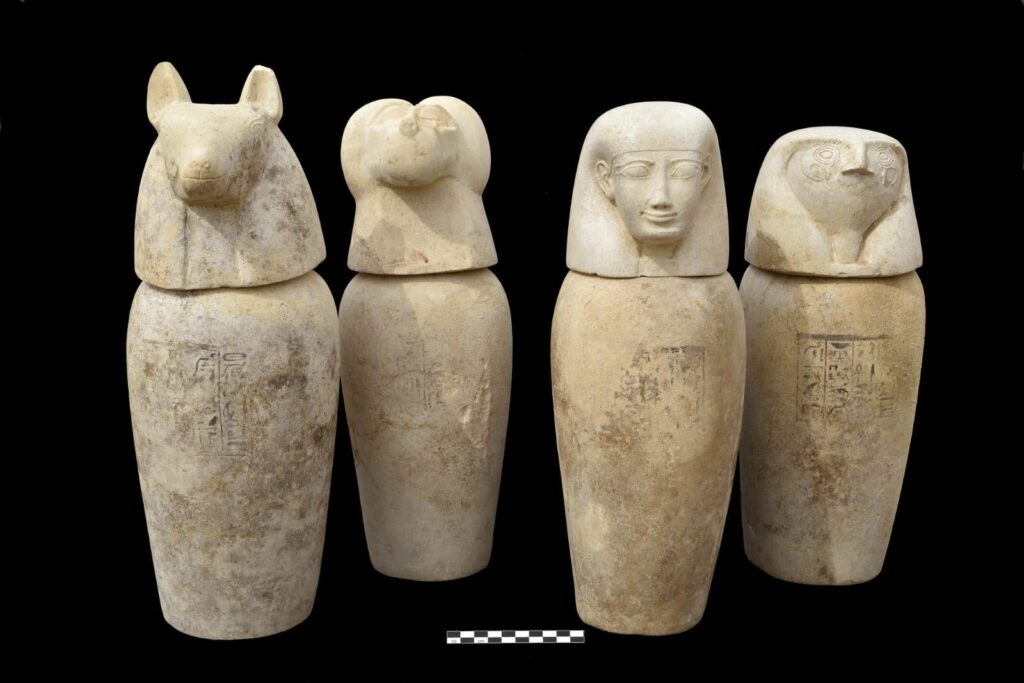
LUXOR, EGYPT—A joint Egyptian-French archaeological mission recently made a series of new discoveries at the mortuary temple of the pharaoh Ramesses II, La Brújula Verde reports. Known as the Ramesseum and the “House of Millions of Years,” the complex was erected by Ramesses on the Nile's west bank across from ancient Thebes during the thirteenth century b.c. Among the new findings were a series of tombs dating to the Third Intermediate Period (ca. 1069–525 b.c.). These contained burial chambers, shafts with canopic jars, sarcophagi, and more than 400 funerary figurines. They also located storerooms for jars of honey, olive oil, animal fat, and wine, as well as textile and stone workshops. The most significant discovery was the so-called ‘House of Life,’ a building attached to the temple, where archaeologists found evidence of a school, including remnants of drawings and school toys and games. This was the first physical evidence of an education center within the Ramesseum and the researchers were able to record its architectural layout in detail. Mohamed Ismail Khaled, the secretary-general of Egypt’s Supreme Council of Antiquities, emphasized the importance of these discoveries as they shed light on the long and complex history of the temple, and open new horizons to understanding its role in ancient Egypt. To read about a drawing found behind the Ramesseum in the nineteenth century, go to "Artifact: Ancient Egyptian Ostracon."


